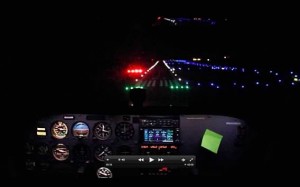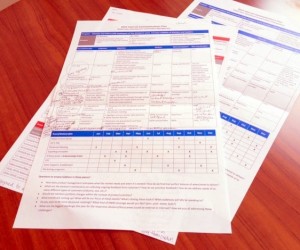The winds are calm, temperatures mild, and there’s the added bonus of a beautiful North Carolina sunset as we’re cleared for takeoff.
Most moms are a little nervous when their sons start to drive, but I had one who had even loftier goals and begged to learn to fly. As a grown adult now and a licensed pilot, I appreciate that he is willing to roll down the runway and pull those wheels up with his crazy mom as his co-pilot (of sorts). Together we take in the outstanding view from 5,000 feet and watch as the colors melt into the horizon.
But while the sky before us settles in for the night, the buzz between my son and the air traffic controller remains a steady hum with back-and-forth banter about air space, speed, altitude and settings.
The communicator in me tunes into their common yet foreign language. It comes so naturally to them, but I know those code words and three-or-four-word responses represent hundreds of policies and guidelines, training documents, procedural manuals and best practices.
Turns out good preparation and planning and staying in touch with the control tower make for smooth flying.
Straighten up and fly right
It’s no different in the enterprise. Keeping one another informed and flying high as an organization also depend on clear guidelines and processes that allow us to communicate and move with confidence, solid in our understanding of what to do when the skies are friendly, and when they’re not.
A multi-faceted communication plan is just as important as a flight plan in making sure you get to the destination you’ve envisioned. Where are we starting from? What are the points in between that will be critical to our long-term success? How can we track our progress? Who will be in the driver’s seat?
The most basic communications plan begins by asking three basic questions about the initiative at hand. If you can answer these questions credibly, you’re cleared for takeoff:
- What is the purpose?
- What is the value to our organization?
- Who cares?
But even good planning won’t be enough to get you there.
We need to be in regular contact with one another throughout the effort to make sure we adjust to unknown conditions, move to a slightly different space if a smoother ride is in order, and ensure we don’t have multiple messages landing at the same time.
At SAS, we approach a new communications request with what amounts to a pilot’s pre-flight walk around to determine the fit of the request in relation to overall company goals and priorities. We quickly determine if it meets the basic three-question criteria above and if it will be a business or pleasure trip (categorized as Business/Organization/Culture).
We work with the business unit to understand the goal and destination and document all the details in a communications plan designed to make their journey successful. It’s a process that keeps our efforts grounded but also gives them wings.
Don’t skip the most important part of introducing new ideas in your organization. Take time to develop a plan that will allow everyone to know where you’re headed, why you’re going, and what it will take to get there. Stay in close contact with one another once the plan is initiated to calibrate as needed, flip some new levers, adjust the dials and stop to refuel. It may take a little more time up front, but it will help you avoid all kinds of unnecessary delays and ensure the smoothest flight possible.




1 Comment
Great article Karen!
Being a pilot myself; you had me at 'takeoff'...
(*SMILE*)